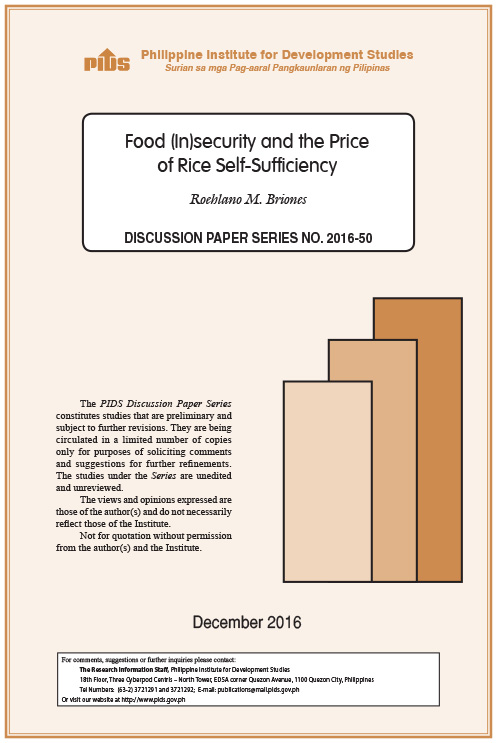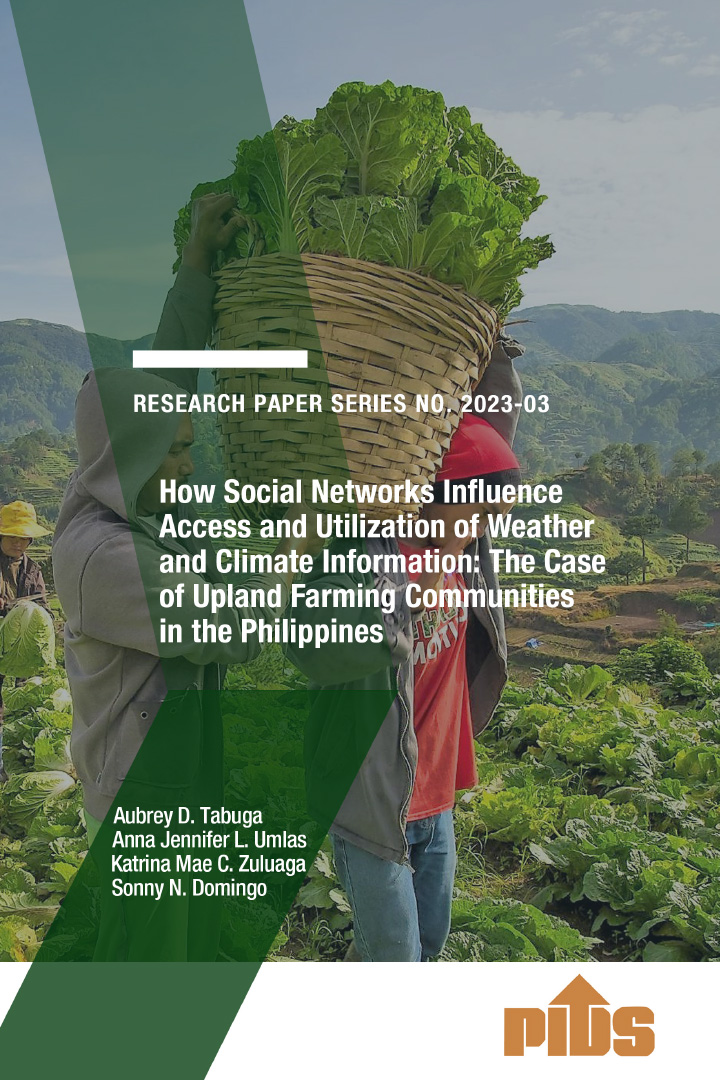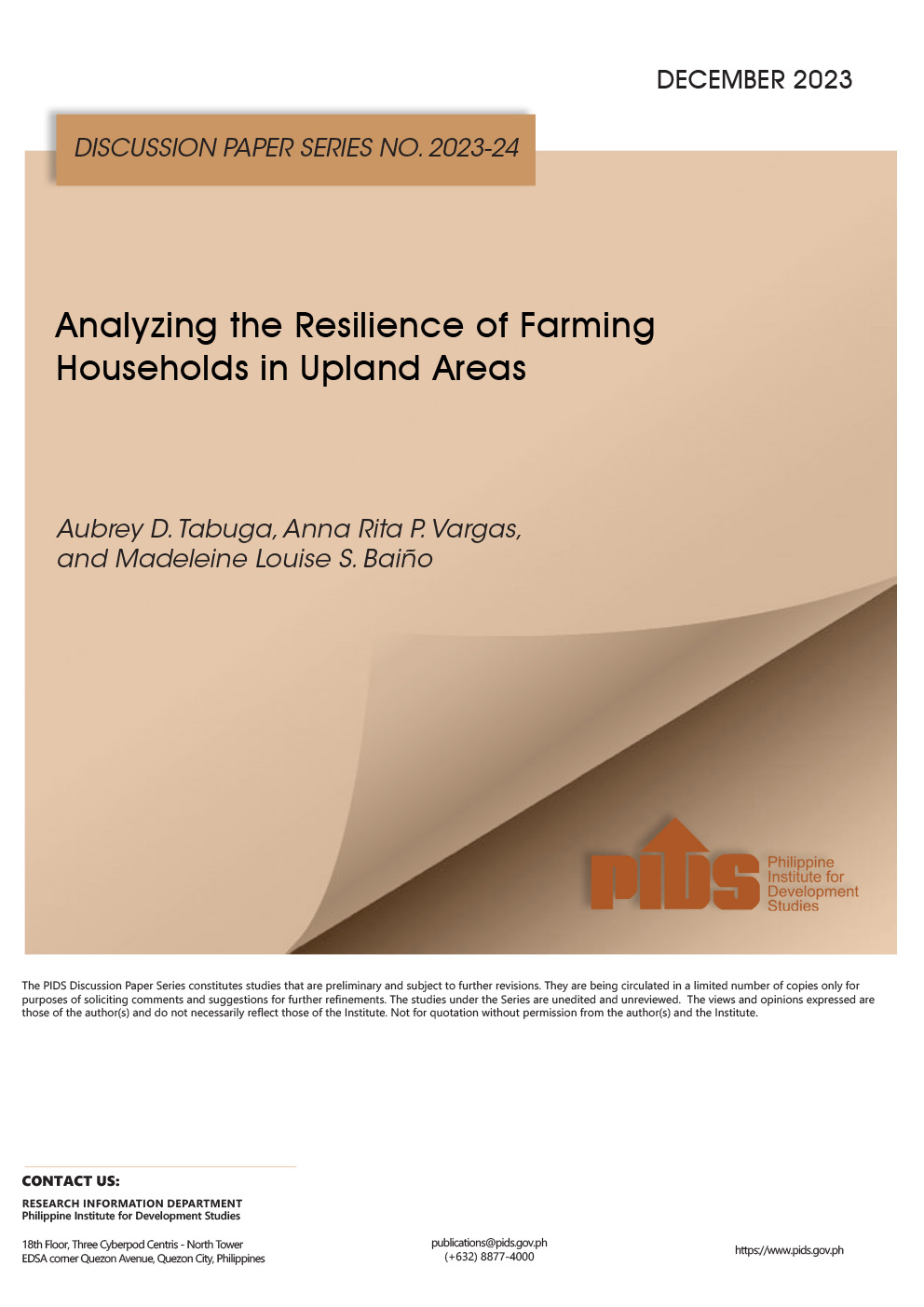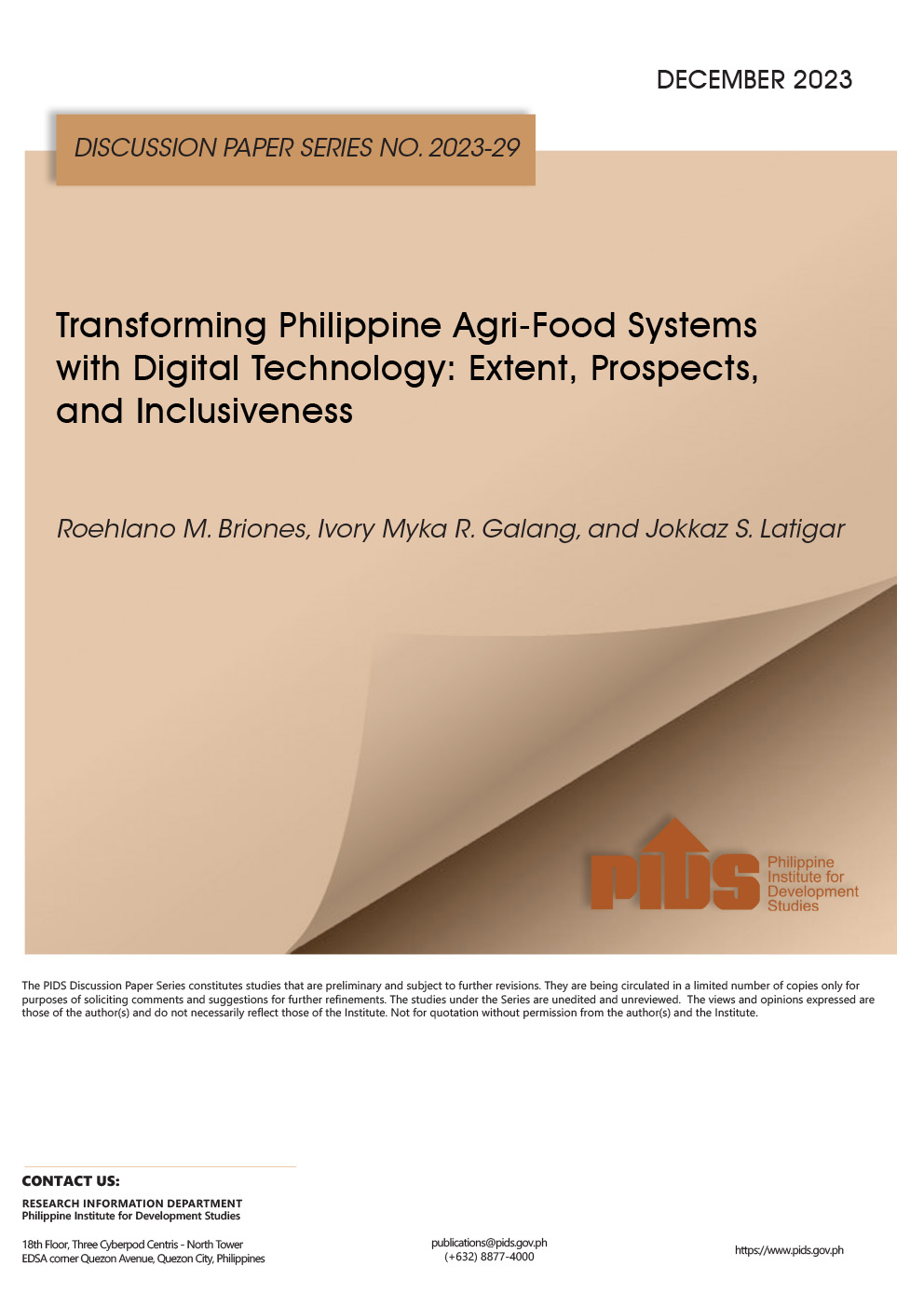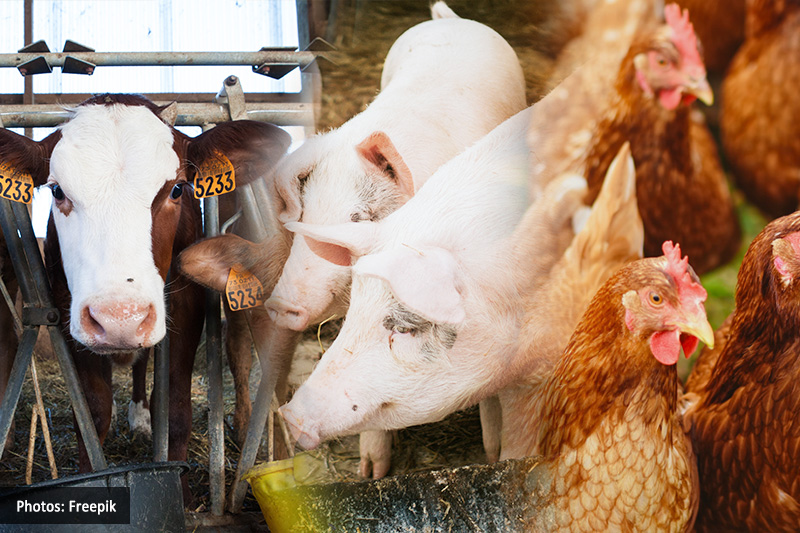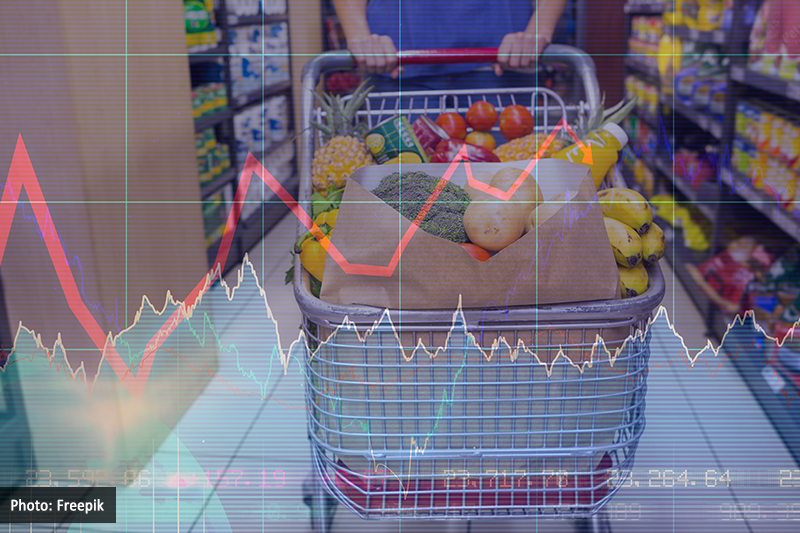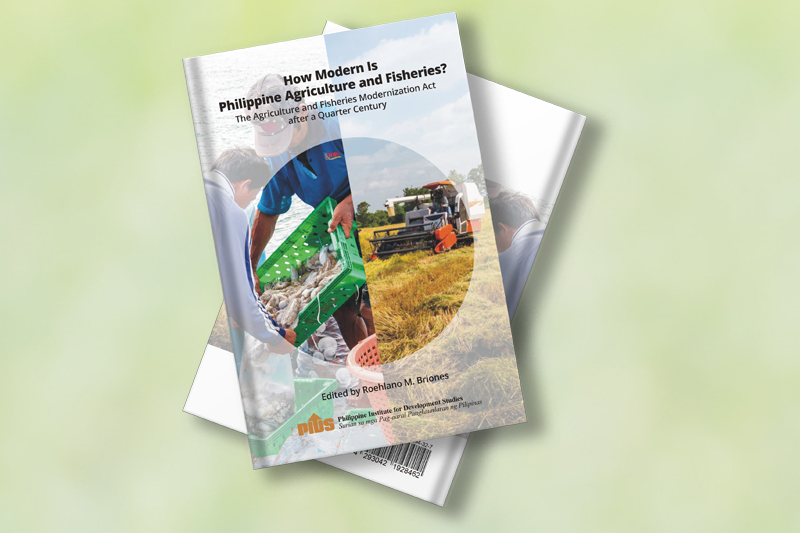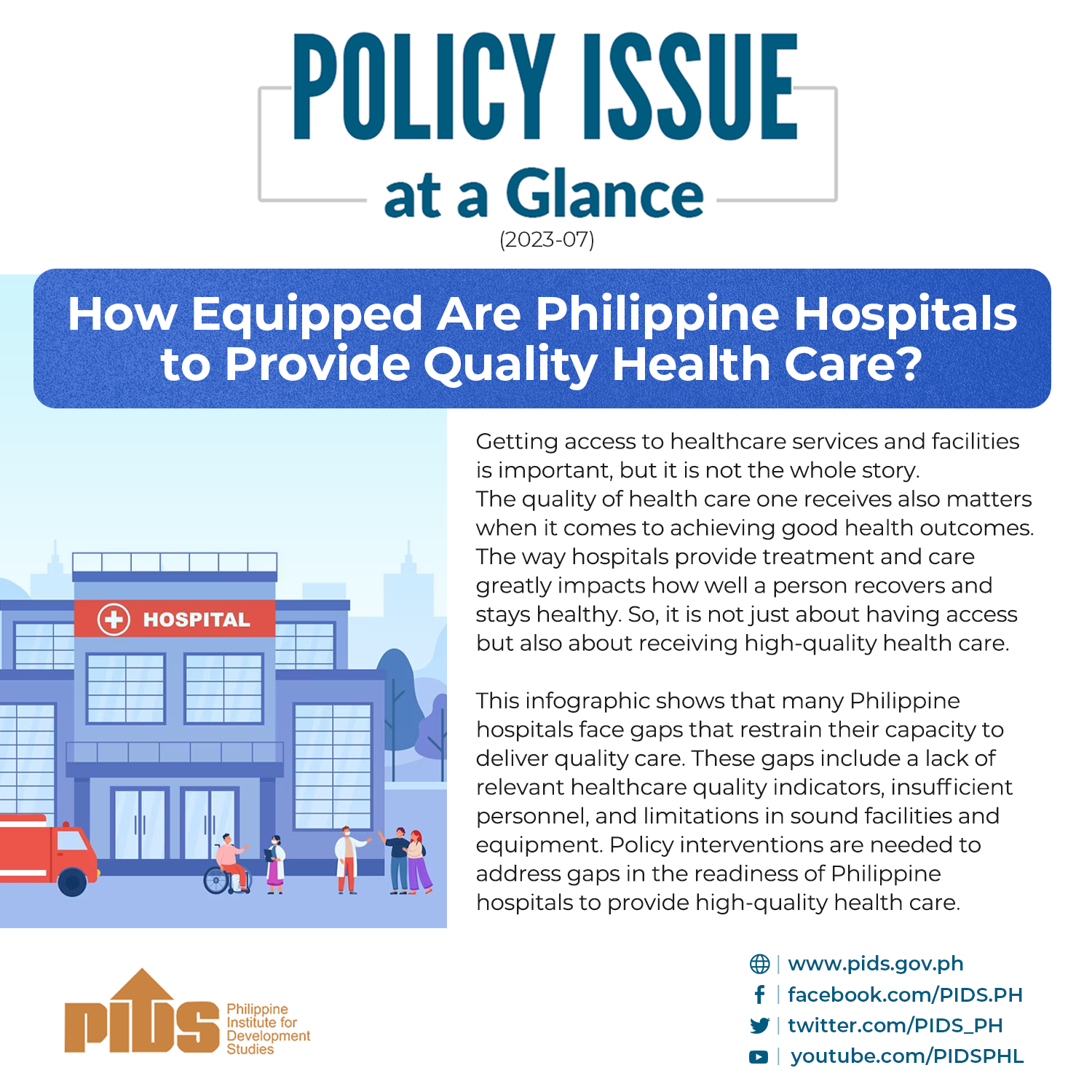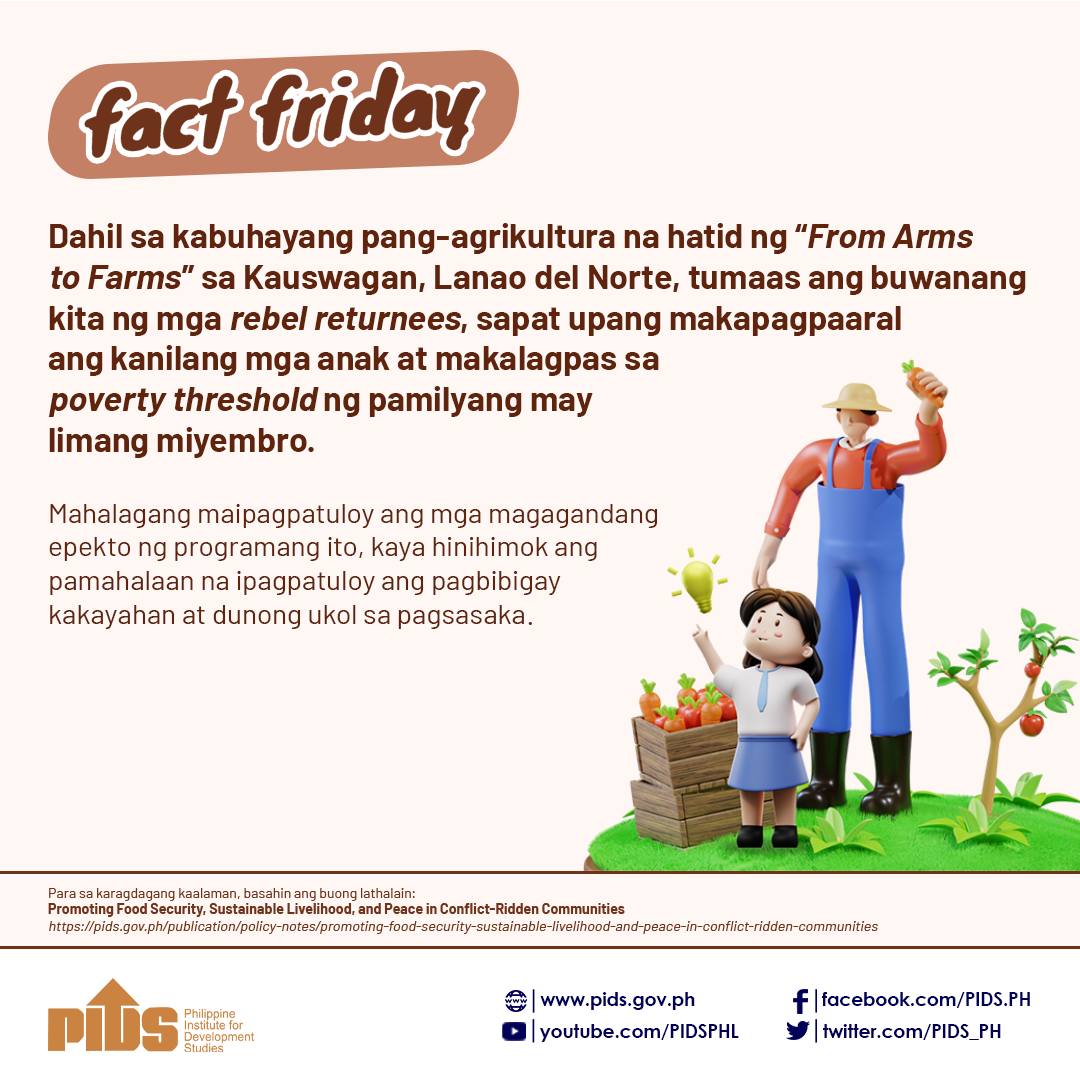The commonly touted solution to achieve food security has always been articulated as achieving self-sufficiency in rice. Since the 1960s, various government regimes have articulated strategies and executed actions to achieve this much-vaunted goal. It has been over half a century, but we have yet to realize this dream. At this point, looking at the hard facts and the numbers, the picture it paints is not pretty. Achieving rice self-sufficiency comes with a price, and let us take a sober look at what it really costs.
Citations
This publication has been cited 5 times
In other Publications
- Lapiña, Geny F. and Salvador P. Catelo. 2017. Knowledge and information gaps: Implications for Philippine food security. Journal of Economics, Management & Agricultural Development, 3, no. 2 . Journal of Economics, Management & Agricultural Development (JEMAD).
- Briones, Roelhano. 2017. High oil prices, more expensive rice to put pressure on inflation . BusinessMirror.
- Calderon, Benjamin. 2017. Toward recovery. The Visayan Daily Star.
- Roelhano Briones. 2017. PH Government's food self-sufficiency approach drove up food prices--PIDS study . PIA.
- Ronnel W. Domingo. 2017. Ditch rice policy, gov’t urged- Group says int’l trade should guarantee PH food security. Philippine Daily Inquirer.

